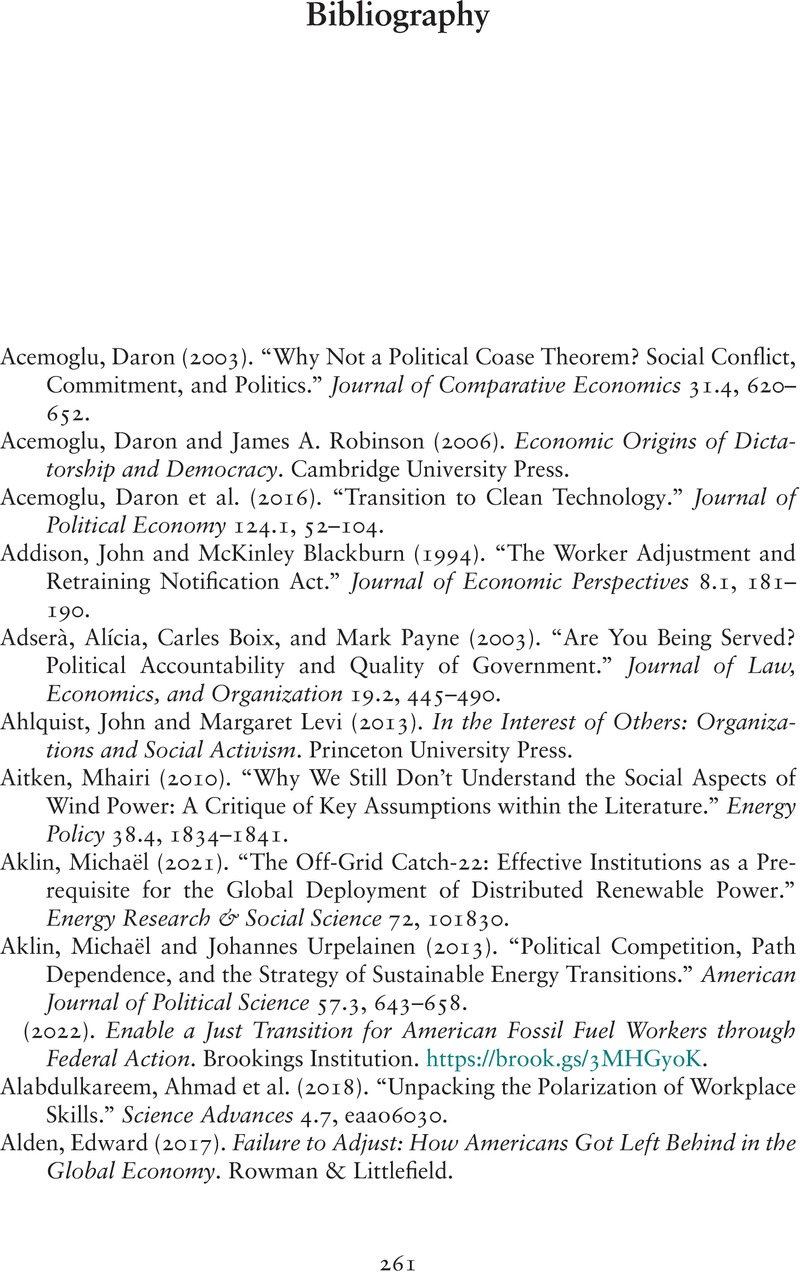Book contents
- Frontmatter
- Dedication
- Contents
- Figures
- Acknowledgements
- 1 Introduction
- 2 Problems and Solutions
- 3 Asking People, Communities, and Companies
- 4 Opportunity Knocks?
- 5 Making Government Policy Credible
- 6 Bargaining for the Future
- 7 Making Workforce Programs Work
- 8 Green Jobs under the Spotlight
- 9 Conclusion
- Bibliography
- Index
- References
Bibliography
Published online by Cambridge University Press: 06 July 2023
- Frontmatter
- Dedication
- Contents
- Figures
- Acknowledgements
- 1 Introduction
- 2 Problems and Solutions
- 3 Asking People, Communities, and Companies
- 4 Opportunity Knocks?
- 5 Making Government Policy Credible
- 6 Bargaining for the Future
- 7 Making Workforce Programs Work
- 8 Green Jobs under the Spotlight
- 9 Conclusion
- Bibliography
- Index
- References
Summary

- Type
- Chapter
- Information
- Uncertain FuturesHow to Unlock the Climate Impasse, pp. 261 - 290Publisher: Cambridge University PressPrint publication year: 2023



